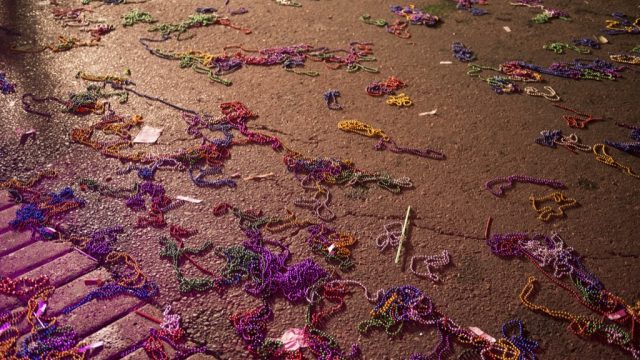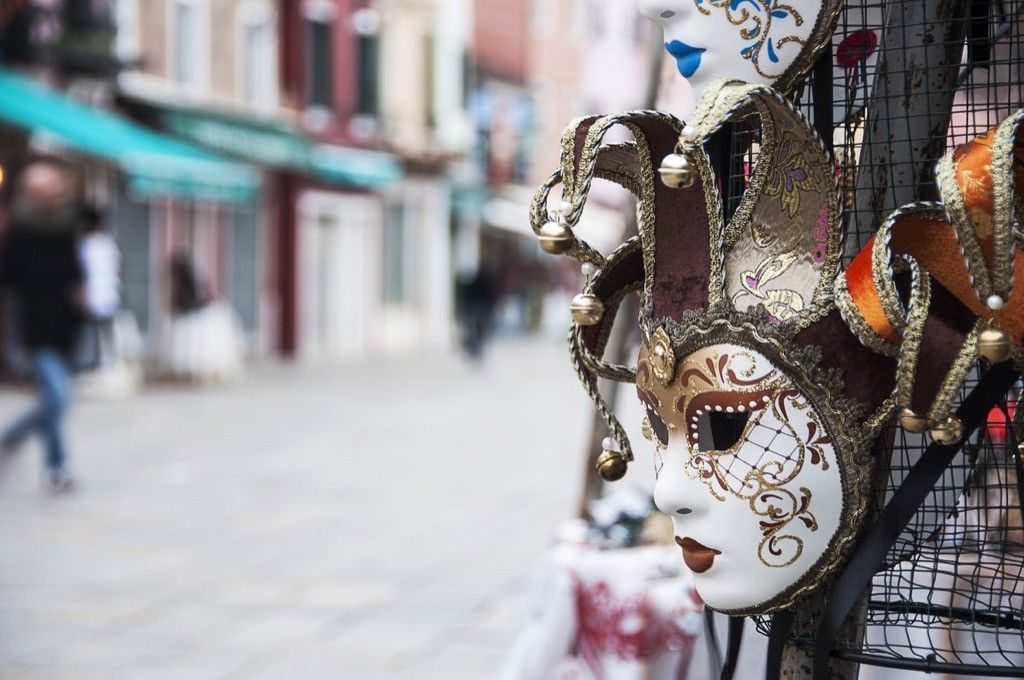This Is What Really Happens to All Those Old Mardi Gras Beads
What can one city do with 25 million pounds of plastic?

The Mardi Gras party doesn't stop after Fat Tuesday—not for the beads, at least. Some are taken home as tokens of the festivities, some are left hanging from the rafters around town, but many go unaccounted for. Seemingly, they just….disappear. But to where?
Well, to find out, it helps to look at where the beads come from. The 2005 film, Mardi Gras: Made in China, by prolific documentarian David Redmon, explores the life of Mardi Gras beads, starting with their birth in Chinese factories, where factory workers endure low wages and substandard conditions. (As Redmon detailed in an article for Smithsonian, one girl reported a daily quota of 200 bead necklaces.) Once shipped to the United States, more than 75 percent are sent straight to New Orleans—and that's where things get messy.
Each year, an estimated 25 million pounds of plastic beads are dumped on the city streets. In January 2018, New Orleans sanitation workers were dispatched to clean out nearly 15,000 clogged catch basins, in which they found more than 46 tons (that's 93,000 pounds, to put it in perspective) of old Mardi Gras beads.
Naturally, this raises environmental concerns. Dr. Howard Mielke, a researcher at Tulane University's Department of Pharmacology, specifically worries about the amount of lead these beads distribute into the city streets. Mielke discovered that the majority of high lead levels in the city's soil are found along parade routes, where plastic beads tend to get tossed and discarded.
This puts quite a toll on local resources. In 2014, the city of New Orleans was forced to spend nearly $1.5 million on sanitation after celebrations to collect an eye-popping 1,758 tons of trash—a lot of solo cups and styrofoam takeout containers, yes, but also massive amounts of Mardi Gras beads. And those beads go straight to landfills, which—as you may know—are already woefully overfilled in the United States.
But it's not all bad news. Small steps are being taken by various groups to try to combat the waste and environmental hazard these tiny beads can cause.
Arc of Greater New Orleans, an organization that works with those who have disabilities, has been reusing and recycling beads for more than 20 years. In 2014, they sold an average of 120,000 pounds of recycled beads—a number that has only ticked up over the years. And, in partnership with the organization last year, various Krispy Kreme locations in the city were offering free doughnuts in exchange for recycled beads.
Another organization, I Heart Louisiana, has also tried to do their part in eliminating the waste. Their solution? Creating handcrafted beads that integrate local aspects of the city, in an effort to get more people to take home their beads and keep them as unique souvenirs. This way, more beads are being reused, and fewer are purchased each year only to be left in the streets.
Then, in February 2018, conscientious citizens went so far to launch the Care2 petition to ban Mardi Gras beads. Currently, it has more than 15,000 signatures. While the petition organizers are in favor of celebrating Mardi Gras, they suggest less toxic, biodegradable alternatives in place of the typical plastic beads. Incidentally, around the same time the petition was started, a Louisiana State University biology professor, Naohiro Kato, created biodegradable Mardi Gras beads made entirely out of large amounts of microscopic algae.
And then there are the artistic alternatives. Costume collaborative Krewe Des Fleurs dresses up in home-made flower costumes each year and hands out "seed beads" that can be reused to grow tiny gardens. And New Orleans-based artist Stephan Wanger started created massive mosaics from old recycled beads in 2007. (One piece used more than 2 million beads!)
Finally, the city is also doing its part. This past year, officials set up bead-recycling stations along some of the parade routes, dispatched volunteers to collect unwanted beads, and even installed "gutter buddies" to temporarily block large objects from clogging storm drains, while still allowing water to drain through. Between citizen efforts and government intervention, 2019 is shaping up to be the most environmentally responsible Mardi Gras yet. And for more on this wacky weekend, learn all about the 15 Weirdest Mardi Gras Rituals.
To discover more amazing secrets about living your best life, click here to follow us on Instagram!





















